Aquatic Plants Out of Water
February 21st, 2008When I got back from Florida last year, I started a small emersed setup in my office to keep some of the cryptocorynes we bought there. First, an emersed setup is one that allows you to grow your plants terrestrially, or out of the water. Really, all that is required is a light, a closed container to maintain proper humidity, and some sort of fertilization plan. It’s not much different from starting seeds or a lite version of hydroponics.
Why would any planted aquarium keeper want an emersed setup? There are many reasons, but one good reason is to more quickly grow out enough plants to start a new aquascape. It’s also a good place to store plants that you want to keep, but don’t want in your current aquascape. Or, you can use one to flower your plants for get seeds, or just simply to see what the terrestrial version of a plant/flower looks like.
I started with a simple seed-starting tray and dome (above) from the hydroponics store. Make sure to get a high dome so that there’s room for your plants to grow vertically. Just recently, I transferred all of my plants from that dome/tray setup into a 10G aquarium in order to gain even more height.
I use mostly coconut-fiber pots filled with a mixture of leaf compost and ADA Aquasoil. This is especially good for most cryptocorynes, but works for other plants as well. Then, after planting each plant, I lightly cover the surface of the soil mixture with moss. Mosses have a natural anti-fungal agent that helps to prevent your plants from being overwhelmed with white-fuzzy-fungus that can easily ruin the whole setup. After that, I fill the container to a water level of about an inch below the rim of the pots. This supplies the pots with a constant water source. Finally, I’m using plain fluorescent strip lights over top, and a small powerhead to circulate water around the tank.
CO2 is not a concern because it is abundant in the atmosphere. Algae doesn’t grow out of the water, so all of your leaves will be algae free. These two things are the largest reasons many of the large aquatic plant nurseries grow their plants emersed before they arrive at your local fish store. For fertilizers, you can use hydroponics solutions, dry ferts, or even aquarium liquid ferts.
Currently, I’m growing Cryptocoryne moehlmannii, Utricularia graminfolia, and several Anubias barteri nana ‘petite’. I want to build up a nice supply of A. ‘petite’ for some upcoming aquascapes. I’m curious to try and flower the Utricularia, and I just haven’t managed to move the crypt to a tank. I hope to expand the number of plants grown this way now that I have more space in my 10G aquarium.


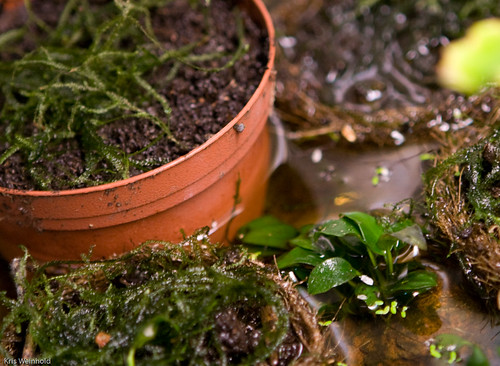
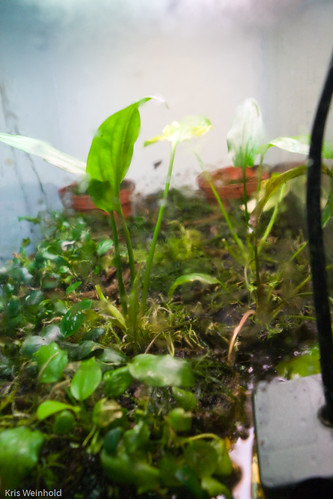
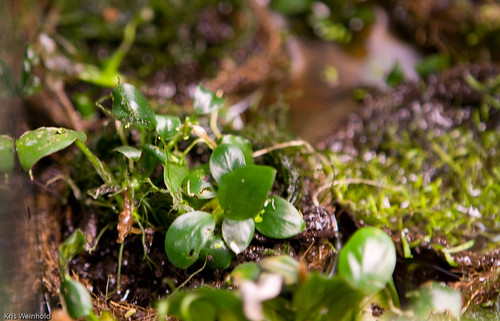
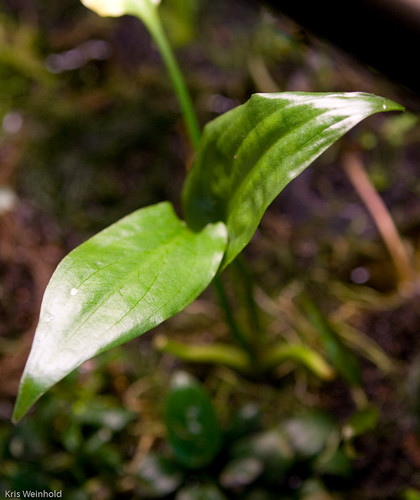







 Perhaps this is old news for some folks, but I wanted to share a fantastic tip I got from another fellow GWAPA member, Ben B., for easily cleaning the ceramic disk on your CO2 glass diffuser. A little background… I run nearly all of my CO2 in-line on my tanks because it’s easy, and because I personally don’t like to put any more equipment in my tank than I need to. But, when the glass diffusers started coming out and becoming quite trendy among planted aquarists, I ordered a couple to see what the fuss was about. For the first month or two, they worked perfectly, spewing small micro-bubbles, but as algae builds on disk, these bubbles turn larger and larger, until eventually most of the CO2 is being lost from the tank before it can be absorbed into the water.
Perhaps this is old news for some folks, but I wanted to share a fantastic tip I got from another fellow GWAPA member, Ben B., for easily cleaning the ceramic disk on your CO2 glass diffuser. A little background… I run nearly all of my CO2 in-line on my tanks because it’s easy, and because I personally don’t like to put any more equipment in my tank than I need to. But, when the glass diffusers started coming out and becoming quite trendy among planted aquarists, I ordered a couple to see what the fuss was about. For the first month or two, they worked perfectly, spewing small micro-bubbles, but as algae builds on disk, these bubbles turn larger and larger, until eventually most of the CO2 is being lost from the tank before it can be absorbed into the water.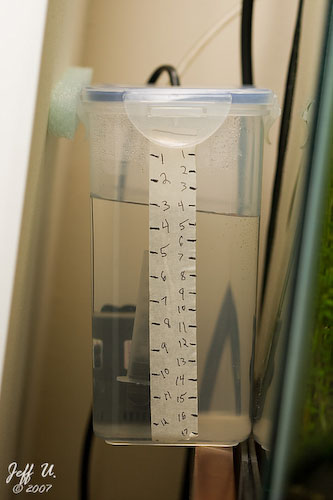
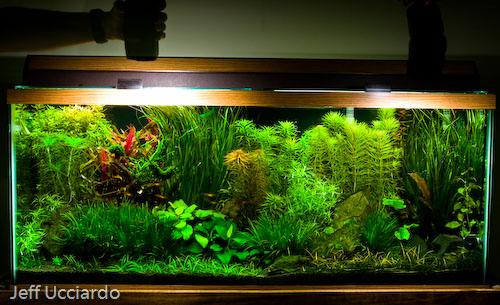


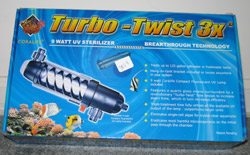









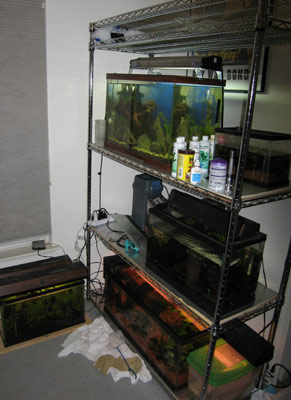 I have been wanting to consolidate some of the tanks in my office for awhile. Previously, I had them on an old bowing bookcase, a wire stand, and the floor. After seeing the current GWAPA president’s tank setup (Aaron), I decided that I wanted the same thing. So, the problem with most of these racks is that the standard ones available in your typical Home Depot or Lowes only support about 200-300lbs per shelf. A standard 20G aquarium weighs about 230lbs filled with water. So, just a single 20G would be pushing the limits.
I have been wanting to consolidate some of the tanks in my office for awhile. Previously, I had them on an old bowing bookcase, a wire stand, and the floor. After seeing the current GWAPA president’s tank setup (Aaron), I decided that I wanted the same thing. So, the problem with most of these racks is that the standard ones available in your typical Home Depot or Lowes only support about 200-300lbs per shelf. A standard 20G aquarium weighs about 230lbs filled with water. So, just a single 20G would be pushing the limits.